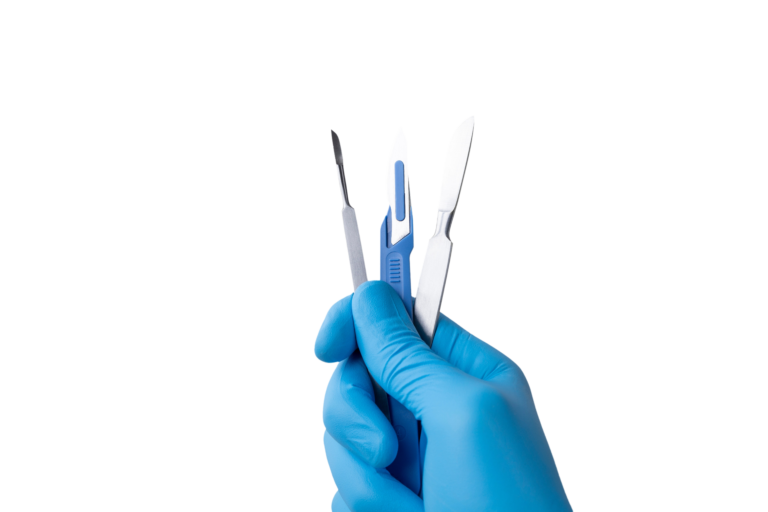
Hair transplant procedures require precision, and the tools used play a crucial role in achieving optimal results. Whether you’re a seasoned professional or a newcomer to the field, maintaining your hair transplant tools is essential to ensure the best possible outcomes for your patients. Proper care of these tools not only enhances their performance but also extends their lifespan, reducing costs in the long run and ensuring a smooth, successful transplant process.
Types of Hair Transplant Tools
There are several key tools involved in a hair transplant procedure. Understanding each type and how to maintain them is vital for delivering excellent results:
- Punches and Needles: These are used for extracting hair follicles from the donor area. Punches come in different sizes, and needles are used for precise follicle placement.
- Scalpels and Forceps: Scalpels are necessary for making incisions in the skin, while forceps help in handling and positioning the follicles during the procedure.
- Implanters and Graft Holders: These tools are used to insert and hold hair grafts during the transplant, requiring regular care to ensure they function optimally.
- Blades: Hair transplant blades come in various shapes, designed for different types of incisions. Blade maintenance is critical for ensuring smooth and accurate cuts.
General Maintenance Practices
The longevity of your hair transplant tools depends on how well you care for them. Here are some general maintenance practices to keep in mind:
- Cleaning and Sterilization
One of the most important aspects of maintaining hair transplant tools is keeping them clean. Proper cleaning removes debris and prevents contamination that could lead to infections. Tools should be manually cleaned with a soft brush to remove hair and tissue residue before being sterilized. Automated cleaning machines are also available to save time, but they should still be followed by manual inspection to ensure thoroughness. Always use medical-grade disinfectants to clean your tools, and never use harsh chemicals that can damage the surfaces. - Regular Inspection for Wear and Tear
Over time, tools can experience wear, especially when used frequently. Regular inspection is key to identifying any issues early. Check your tools for signs of dullness, cracks, or rust, and replace or repair them as needed. Dull blades, for example, can lead to complications during the procedure and are difficult to sterilize properly. Inspecting your tools after each use ensures they stay in good condition for the next procedure. - Lubrication for Moving Parts
Some hair transplant tools, like forceps and punch devices, have moving parts that can wear out without proper lubrication. Regularly lubricating these parts ensures smooth operation and prevents them from seizing up. Always use a medical-grade lubricant that is safe for surgical tools to avoid contaminating your tools with oils or residues that could cause complications.
How to Safely Sterilize Hair Transplant Tools
Sterilization is crucial in maintaining hygiene and ensuring patient safety during a hair transplant. Here’s how to sterilize your tools effectively:
- Autoclaving
The most common and effective sterilization method is autoclaving, which uses high-pressure steam to kill bacteria and viruses. Autoclaves are designed to sterilize surgical tools at temperatures between 121°C and 134°C. Ensure your tools are properly packed in sterilization pouches to avoid contamination after sterilization. - Chemical Sterilization
If you don’t have access to an autoclave, chemical sterilization is an alternative. Use medical-grade sterilizing solutions and follow the manufacturer’s instructions for soaking times. After chemical sterilization, rinse tools thoroughly to remove any residue. - Best Practices for Tool Storage
Once sterilized, tools should be stored in a clean, dry environment to avoid recontamination. Use storage containers or cabinets with proper ventilation to maintain their sterile state until they are needed.
Avoiding Common Maintenance Mistakes
Maintaining hair transplant tools can be tricky, and some common mistakes should be avoided:
- Using Improper Cleaning Agents: Avoid using non-medical cleaning products, as they can damage your tools and cause harm during procedures. Stick to solutions designed for surgical tools.
- Skipping Regular Inspections: Don’t wait until a tool breaks or malfunctions during a procedure. Regularly inspect your tools to prevent unnecessary disruptions.
- Over-Sterilizing or Using Improper Sterilization Methods: Some tools are sensitive to extreme sterilization methods. Always follow the manufacturer’s instructions to avoid damaging the tools.
When to Replace Hair Transplant Tools
Even with the best maintenance, some tools will eventually need to be replaced. Here are a few signs that it’s time for new tools:
- Dull or Bent Blades: If the blade no longer cuts cleanly or is bent, it’s time to replace it. This can impact the success of the transplant and slow down the procedure.
- Cracked or Rusted Tools: Any tool with visible damage should be replaced immediately to avoid infection or other complications.
- Excessive Wear: If your tools are showing signs of wear from frequent use, it may be more cost-effective to replace them rather than continue repairing them.
Supplier Recommendations for Quality Hair Transplant Tools
When it comes to hair transplant tools, quality is essential. Always purchase your tools from trusted surgical suppliers who specialize in surgical instruments. High-quality tools are made from durable, rust-resistant materials and are designed for precision, ensuring they work effectively and maintain their condition over time.
Look for suppliers that offer comprehensive warranties and customer support, so you can replace or repair tools as needed. A reputable supplier will also provide guidelines on tool maintenance and sterilization to ensure you get the most out of your investment.
Conclusion
Proper maintenance of hair transplant tools is a vital component in the success of hair restoration procedures. From regular cleaning and sterilization to inspecting for wear and tear, each tool must be carefully maintained to ensure that it performs at its best. By following these maintenance tips, you can extend the lifespan of your tools and provide the best care for your patients. Always invest in high-quality instruments from trusted suppliers, and don’t skip regular upkeep to keep your practice running smoothly and safely.
go to homepage